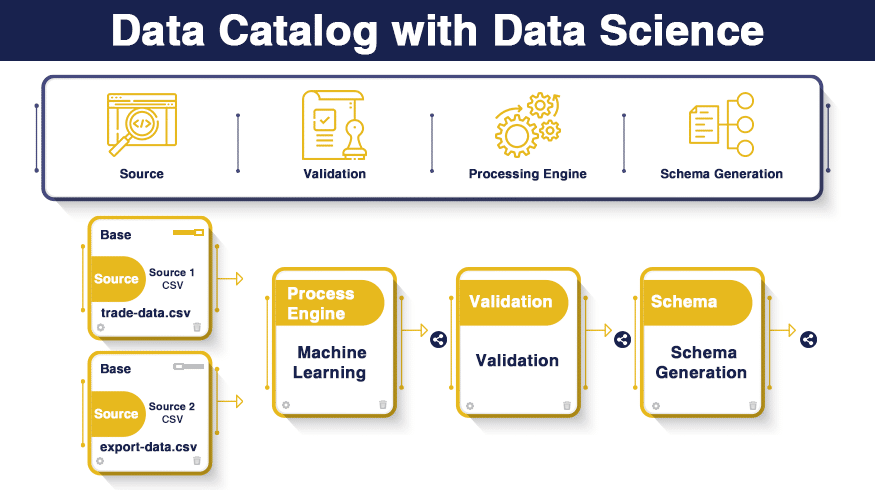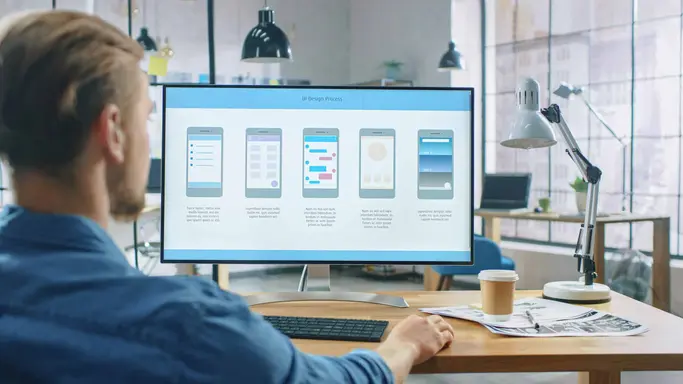

Client
A top 5 global bank
Goal
Create a unified platform for anti-money laundering functions, analytics, and compliance implementations
Tools and Technologies
Angular 5, Java, Open Shift, and DevOps
Business Challenge
The client expanded its fraud and anti-money laundering (AML) monitoring functions, involving multiple lines of business and 15,000 employees. The scaled system led to the lack of standardization of frameworks and resultant adoption of disjointed, manual-intensive, and high-cost AML technology. The ongoing disconnect hindered the efforts of automating, consolidating and implementing AML functions, enterprise analytics, and regulatory compliance efficiently throughout the organization.

Solution
Iris optimized existing operations and technology investments by developing and implementing a unified point of access for the discrete AML functions, featuring micro-front-end architecture. Engineered to be horizontally scalable through containerization with common authentication and authorization gateways, the single user interface (UI) allows onboarding and control of multiple extended AML functions, including visualization of metrics.

Outcomes
The solution amplified efficiencies and reduced costs through the automated system and seamless exchanges of information. Significant outcomes included:
- Hassle-free transition from multiple to a single UI
- Unified, streamlined user experiences with more effective sessions
- Creation of standardized deployment procedures for AML rules and applications
- Saving of nearly $1M on infrastructure costs
- Reduced infrastructure maintenance time
- Frictionless migration of applications to the cloud

Our experts can help you find the right solutions to meet your needs.
Reporting transformation with data science and AI



Client
One of the world's leading bank
Goal
Improve efficiency in disclosure and reporting
Tools and Technologies
Python – SciPy, Pytesseract, NumPy, Statistics
Business Challenge
The client relies upon a centralized operations team to produce monthly net asset value (NAV) and other financial reports for its international hedge funds — from data contained in 2,300 separate monthly investment fund performance reports. With batch receipts of rarely consistent file formats — PDF, Excel, emails, and images — the process to read each report, capture key info, and create and distribute new metrics using the bank’s traditional tools and systems was highly manual, time-consuming, error-prone, and costly.

Solution
Iris developed a Data Science solution that rapidly and accurately extracts tabular data from thousands of variable file documents. Using a statistical, AI-based algorithm featuring unsupervised learning, it auto-detects, construes, and resolves issues for every data point, configuration, and value. Complex inputs are calculated, consolidated, and mapped as per predefined templates and downstream business needs, efficiently generating numerous, distinct, and required period-end financial disclosures.

Outcomes
The high solution accuracy helped the client’s global NAV reporting team significantly improve precision, efficiency, quality, turnaround time, and flexibility. The delivered solution contributed to:
- 90 - 95% reduction in operational efforts
- 99% accuracy in processing variable inputs
- Zero rework effort and cost
Our highly customizable and scalable solution can be seamlessly integrated with existing reporting applications and MS Outlook while accommodating additional volumes, report types, and business units.

Our experts can help you find the right solutions to meet your needs.
Powering shop floor efficiency with data analytics



Client
A leading diesel engine manufacturer
Goal
Reduce bottlenecks on the production line that arise from last-minute changes to orders and ensure compliance with build instructions
Tools and Technologies
Windows, SQL Server, C#, .NET, ESB, HTML5, Angular, GitHub, JIRA, Visual Studio, and WebStrom
Business Challenge
A diesel engine manufacturer based in Detroit faced frequent production delays. The cause of the inefficiency was its build book system. The manufacturer used a printed build book to communicate the specifications of the engine being built to the production floor. But, often after the book was sent to the shop floor, the manufacturer had to make changes to specifications.
In such cases, those working on the production line would not be able to use the printed build book. Waiting for a reprinted book would halt production. As a result, the changes were usually communicated outside the manual and assumed to be followed. If the new specifications weren’t followed, they would be discovered only in quality assurance, leading to a loss of time and dollars.

Solution
The client wanted a solution to resolve bottlenecks created by the printed build book and ensure compliance with build instructions. Ideally, the build book is dynamically pushed onto a handheld device assigned to the shop floor. The system would allow managers to update the specifications in the build book on the fly and alert the production team to the changes.
The device would also communicate the status of production to managers. For example, they would know which work center is working on an engine so that relevant pages of the build book could be updated and displayed to those work centers.
Iris custom-built an application that allowed real-time updates of the build book. It was designed to push the build book to work center operators on V10 devices (RFID transponders) with screen sizes ranging from 3 inches to 10 inches. The solution included a consolidated dashboard that provided the management near real-time visibility of work centers and the status of the engine production.

Outcomes
During Phase 1 of the project, we deployed 250 V10 devices. After a pilot run of four weeks, the client stopped printing build books; the handheld devices with our application were a superior alternative.
The solution helped eliminate printing costs and allowed the manufacturer to accommodate last-minute changes in specifications without disrupting production.

Our experts can help you find the right solutions to meet your needs.
Global pivot from physical to online tests



Client
A leading educational testing and assessment services company
Goal
Switch from in-person to online testing
Tools and Technologies
AWS Serverless, Dynamo DB, Node.js, Typescript, Java, Jenkins, and Angular
Business Challenge
Our client, which provides educational testing and assessment services, faced an existential threat with the pandemic-era lockdowns and social distancing requirements. The testing centers it operated at physical locations were unable to open, leaving thousands of students worldwide in a state of uncertainty.
Our client had to switch from in-person testing centers to a digital-first or online testing solution almost overnight. To achieve that, it had to migrate rapidly from legacy systems to the cloud. It also needed to ensure the sanctity and accuracy of its tests while delivering a seamless digital experience to its customers. Other challenges included the ability to dynamically scale up or scale down capacity in response to demand, maintain acceptable service levels, and enable thousands of expert test raters to access and evaluate tests.

Solution
Iris Software stepped in to facilitate a strategic digital pivot in the business model to secure the company’s future. Modernization efforts that were underway at the company even before the pandemic were accelerated as a digital upgrade became imperative. We shifted the data stored on legacy infrastructure to the cloud.
Our team developed a new testing interface that would work overnight across devices, geographies, and different internet connections. Switching the testing operations to the cloud with scalable capacity could help manage the surge in the number of users for the tests. Iris also deployed automation and AI tools to deliver superior experiences for test raters. Those who faced challenges while attempting to grade tests were provided with an always-on AI-based solution to automate the troubleshooting and ticketing process.

Outcomes
The client now has scalable, digital-first testing capabilities to meet all its testing requirements.
- Cloud-based testing enabled on-demand access to students, evaluators, and employees.
- The remote testing options are accurate, secure and safe from external threats.
- A strong focus on automation and user experience has allowed for optimized online offerings.
- Surges in demand for tests can be met rapidly and at scale with minimal intervention.
- Thanks to the always-on cloud offerings, service levels are easily maintained.
- The successful digital pivot has led to strong interest in a hybrid operating model to safeguard the business from threats in the future.

Our experts can help you find the right solutions to meet your needs.

Do you trust your data?
Data driven organizations are ensuring that their Data assets are cataloged and a lineage is established to fully derive value out of their data assets.

Good business decisions are often the product of the right people having access to the right data at the right time. Data lineage makes this possible.
An Iris Software Perspective Paper brings you insights on why establishing data lineage has become imperative for organizations across industries, what benefits it can bring to your enterprise, and how you can begin your data transformation journey.
How can data lineage help your organization? Guided by Data & Analytics service providers, data lineage can drive better outcomes such as improved data quality or delivering better insights to business teams. It could also ensure compliance with regulations such as the European Union’s General Data Protection Regulation (GDPR) and BCBS 239, Basel Committee on Banking Supervision's principles for effective risk data aggregation and risk reporting.
The perspective paper highlights the value of a Data Catalog and a Data Lineage solution in an organization. The paper details on how machine learning (ML) and natural language processing (NLP) are used to accelerate the data cataloging process and thereby shorten time-to-value.
The paper also highlights the Iris Data Governance solution framework along-with representative case studies.
Contact
Our experts can help you find the right solutions to meet your needs.
Get in touchHow to transform your risk reporting mechanisms



Client
A brokerage firm with a strong presence in the capital markets
Goal
Improve risk reporting and calculations
Tools and Technologies
Dot Net, C#, Greenplum, JUX Proprietary Framework and HTML5
Business Challenge
The client's market risk reporting and limit monitoring platform was based on products that were reaching the end of their service lines in the foreseeable future — Microsoft's Silverlight for viewing rich content and IBM's Netezza for data warehousing. They wanted to move to a new-technology platform. Among the big challenges was a lack of user-friendliness, a high cost of ownership because of the maintenance needed, and a lack of scalability as the data could not be clustered. The existing systems did not enable efficient audit trails and tracking of users. Iris had to identify alternatives that would sit well with 55 other applications in the system.

Solution
We considered building a visualization platform using the latest JavaScript frameworks such as Angular or React but settled on making a fresh user interface and UI framework on HTML5. We developed new UI widgets to provide better user experience, making it possible for users to customize their workspace. We integrated the module to manage a user’s role and access level. In all, we provided a modern, flexible interface for application deployment that was developed in-house.

Outcomes
We successfully moved all the 55 applications to the new platform. As a result, the total cost of ownership was expected to be 15% lower after the migration. It was also built for the future — a distributed, scalable, mobile-ready platform. It had an integrated module for managing user roles and access levels and could be customized with various themes to provide better user experience. User tracking and audit trails were enabled.

Our experts can help you find the right solutions to meet your needs.
The power of in-sprint automation



Business Challenge
The client had a legacy trading platform that had grown and evolved over time. The platform consisted of a stack of 33 applications, built on a variety of technologies and architectures.
Testing new features and additions was proving to be a big challenge. A simple change in one feature would warrant a verification of the complete application. To ensure that any change does not affect other functionality, the client needed to do extensive regression testing and verification.
This was a cumbersome process with over 20,000 or 30,000 test cases being checked and executed manually. The trading firm had to deploy over 20 people to carry out this exercise. The client had tried to automate the testing process with a variety of tools but was not able to get the efficiencies it wanted.
In addition, the client had multiple squads working on different apps, functionality and features. Each squad used its own automation suite. It was becoming a challenge to co-ordinate the work of the different squads and ensure that changes made by a squad did not impact the overall functionality of the platform. Iris’s brief was to design and deploy a common cloud-based test automation framework for the client’s trading platform to ensure that it could launch new features faster.

Solution
Using its cloud-based ready-to-deploy test automation framework, Iris sped up the deployment of new features for the client’s trading platform. The cloud solution, based on Amazon Web Services (AWS), featured continuous testing of multiple products on a common framework layer. It allowed for complete capacity planning of spinned cloud instances and need-based shutdowns.
Iris executed the project using acceptance test driven development (ATDD), a methodology that involves collaboration between customers, business teams and development teams. The teams jointly created the user stories and put down the acceptance criteria for any feature or functionality. Then tests were designed within the common framework to check if the feature met the acceptance criteria.
What was unique about the approach? Typically, automation is introduced towards the end of a development cycle. You would find that, in most projects, developers bring in automation in Sprint 4 for features developed in Sprint 1, 2 and 3. As a result, return on investment isn’t maximized. Our team introduced ‘in-sprint’ automation, enabling 90% test automation with every sprint. This resulted in more efficient and faster testing, and cost savings for the client.

Outcomes
The client’s deployment speed improved significantly with 90% faster execution in each sprint cycle and 80% faster script development.
The cloud-based solution is 100% configurable for on-demand execution on AWS, which reduced the client’s cloud infrastructure costs by 70%.
The new ability for complete capacity planning through the use of infrastructure-as-code (IaC) for spinning up cloud instances helped the client achieve end-to-end (E2E) automation of regression/ functional test cases.

Our experts can help you find the right solutions to meet your needs.
Data consolidation speeds up drug search



Client
A U.S.-based pharmaceutical multinational corporation
Goal
Reduce turnaround time for APRs
Tools and Technologies
Amazon’s AWS OPCx, Webmethods, natural language processing (NLP), neural networks, and Python programming
Business Challenge
In pharmaceutical R&D, data is generated from several sources: the process, patients, retailers, and caregivers, among others. Pharmaceutical R&D organizations that use the traditional way of creating APRs manually consolidate paper specifications into binders across all R&D functions.
Specific regional rules, compliance mandates, and external regulations were slowing down the client’s workflow. Many spreadsheets in multiple formats were leading to errors from manual entry and duplication of data — the inevitable “swivel effect” that results from data being pulled out from disparate, unconnected software packages.
Iris was approached to improve the process of collecting and using data from multiple sources; the improvement would help the client identify and develop new potential drug candidates faster.

Solution
Iris’s team of 12 specialists designed, developed, tested, and deployed a cloud-based application that integrates data from multiple regions and eight different systems into a single, unified interface for the client’s users. Our application unified the creation and management of the client’s workflows across its lines of business and 20 different product families.
The development environment included Amazon’s AWS OPCx, Webmethods, natural language processing (NLP), neural networks, and Python programming.

Outcomes
Within a year of the application’s release, 2,800 users were using the application, with 55% of APRs turning around in 10 calendar weeks or less. Thanks to the in-memory data grid, the response time of transactions across the board has been brought down to nearly 2 seconds.
The cloud-based application developed by Iris ensures that data is automatically and seamlessly shared between systems that were previously stand-alone and required the tedious manual entry of data.

Our experts can help you find the right solutions to meet your needs.
Cloud-native app opens new markets for trading services



Client
The world’s leading provider of trading services for fixed income products
Goal
Create an IT architecture to support growth across markets and products
Tools and Technologies
AWS Cloud, Java, Springboot, React JS, React, Redis, Kafka, C#, Ranorex and Test Rails
Business Challenge
The client, a market leader in bonds trading, was expanding to new markets, acquiring new businesses, introducing new products and adding features to existing offerings. To support its growth plans, it needed an agile, modern, cloud-based platform.
Some of the business needs the client wanted to address with the new solution were:
- How do we achieve scale with minimal latency in operations and service?
- How do we integrate new businesses seamlessly and without disruption?
- How do we roll out new features faster to improve customer experience and get a competitive edge?
- How can we use data to help customers make better trading decisions?
- How can we monetize the data?
As a solution partner, we had to not only create a new IT architecture for the client’s trading platform but also constantly re-engineer and improve the architecture to quickly meet emerging business needs.

Solution
We deployed a scalable, highly available auctions solution on the AWS cloud using Java, Springboot, React JS, React, Redis, and Kafka.
Optimized algorithms now achieve best matching with minimal latency while offering full price transparency. Artificial intelligence (AI) and machine learning (ML) provide greater insight and real-time price discovery for specific asset classes.
The new cloud-based architecture enabled the client to create products and monetize market data. Those products helped customers get accurate data in real-time to take better and faster trading decisions.
Test automation across the trade lifecycle using a combination of C#, Ranorex, Test Rails helped the client update user interfaces (UI) without reducing performance. It also eased integration linkages between the acquired solution’s frontend and the client’s existing backend.

Outcomes
The introduction of Agile methodology and the cloud-native application has helped the client significantly speed up time-to-market for new releases. It is now able to make releases several times a year.
The new IT architecture now allows the client to offer trading in Muni bonds (an acquired product) and U.S. treasuries (a new service). The solution also enables the client to support Chinese markets.

Our experts can help you find the right solutions to meet your needs.
Real-time tracking of a global container fleet



Client
A diversified global business group with a strong presence in maritime services.
Goal
Real-time tracking of a global container fleet
Tools and Technologies
Microsoft Azure, Node JS, C#, Bootstrap, and HTML5
Business Challenge
The pandemic has made it critical for transportation and logistics firms to manage their assets (or fleets) more efficiently.
Demand is high for real-time asset tracking and tracing solutions. For the marine services business of our client, real-time management of a global fleet of containers required continuous, global tracking.
Tracking the container fleet and meeting compliance requirements was laborious and error-prone, often leading to delays and lost opportunities. The client also did not have a mechanism to track customer usage of pay-per-use containers.
We were tasked with creating multi-tenant based cloud application that would be optimized for cost and yet not compromise the user experiences of customers and field teams.

Solution
Our decade-long experience in radio-frequency identification (RFID) helped us address this challenge. Our information engineers, UX designers, solution architects, and business analysts worked onsite with the customer to test scenarios and create a new architecture along with new user experiences and interfaces.
We built the solution using the latest Microsoft Azure cloud services and BizTalk and RFID middleware for an integrated framework involving multiple customers (tenants) and services. An offshore team engineered the new application with the capabilities sought by the client; the architecture team helped create new systems and environments for development, quality assurance (QA), user acceptance testing (UAT), and production.
The solution was capable of handling large amounts of streaming data with the help of edge services located near-site. Customized workflows captured container movement within each site, while GPS services tracked container movement across the globe. The application, which was deployed well within the scheduled deadline, enables post-production maintenance and enhancements from our offshore center.

Outcomes
We engineered real-time tracking and tracing for the client’s global container fleet, with map support and enhanced personalization for users based on location and asset class. Responsive design ensured that the application could be seamlessly used across various devices. Our experience with RFID and cloud-based engineering helped us anticipate and prepare the scenarios well in advance so that solutions could be delivered to the client fast. This significantly reduced the time for the client to prepare cost and compliance status reports, and location-based dashboards for KPIs. The near-real time tracking of containers reduced the time to calculate exact container usage and certificate status from days and hours to a few minutes.

Our experts can help you find the right solutions to meet your needs.
Industries
Company

Bring the future into focus.
